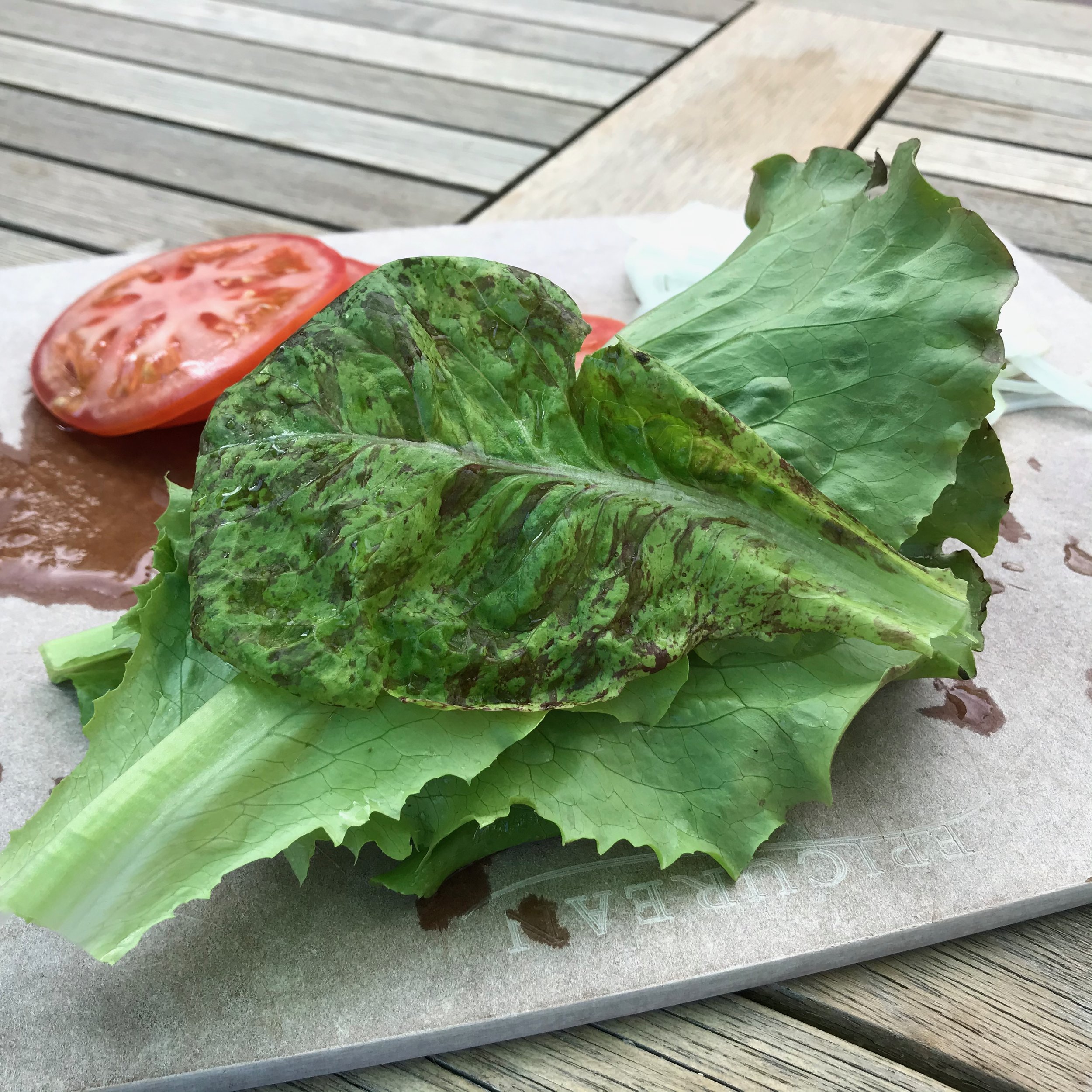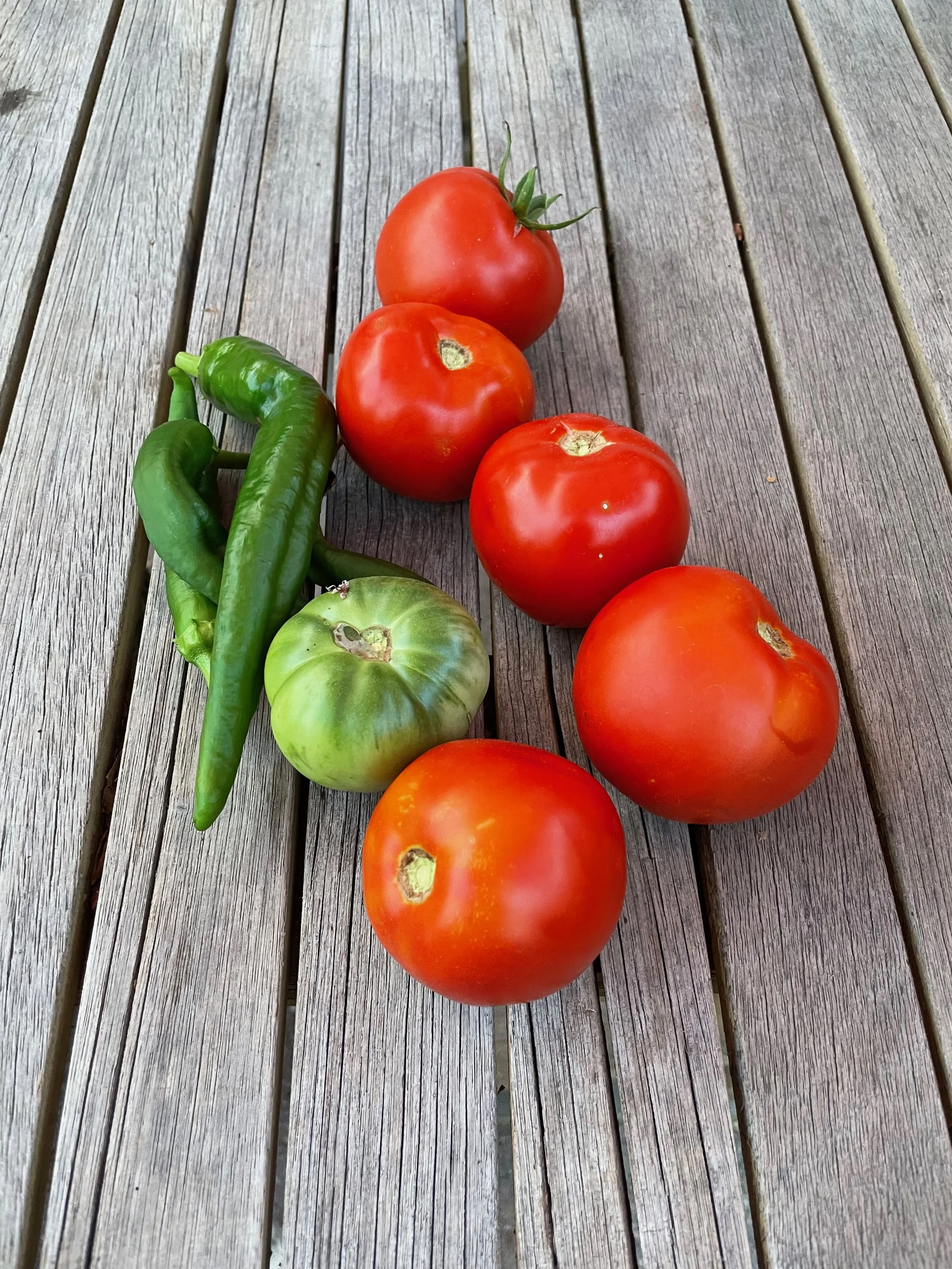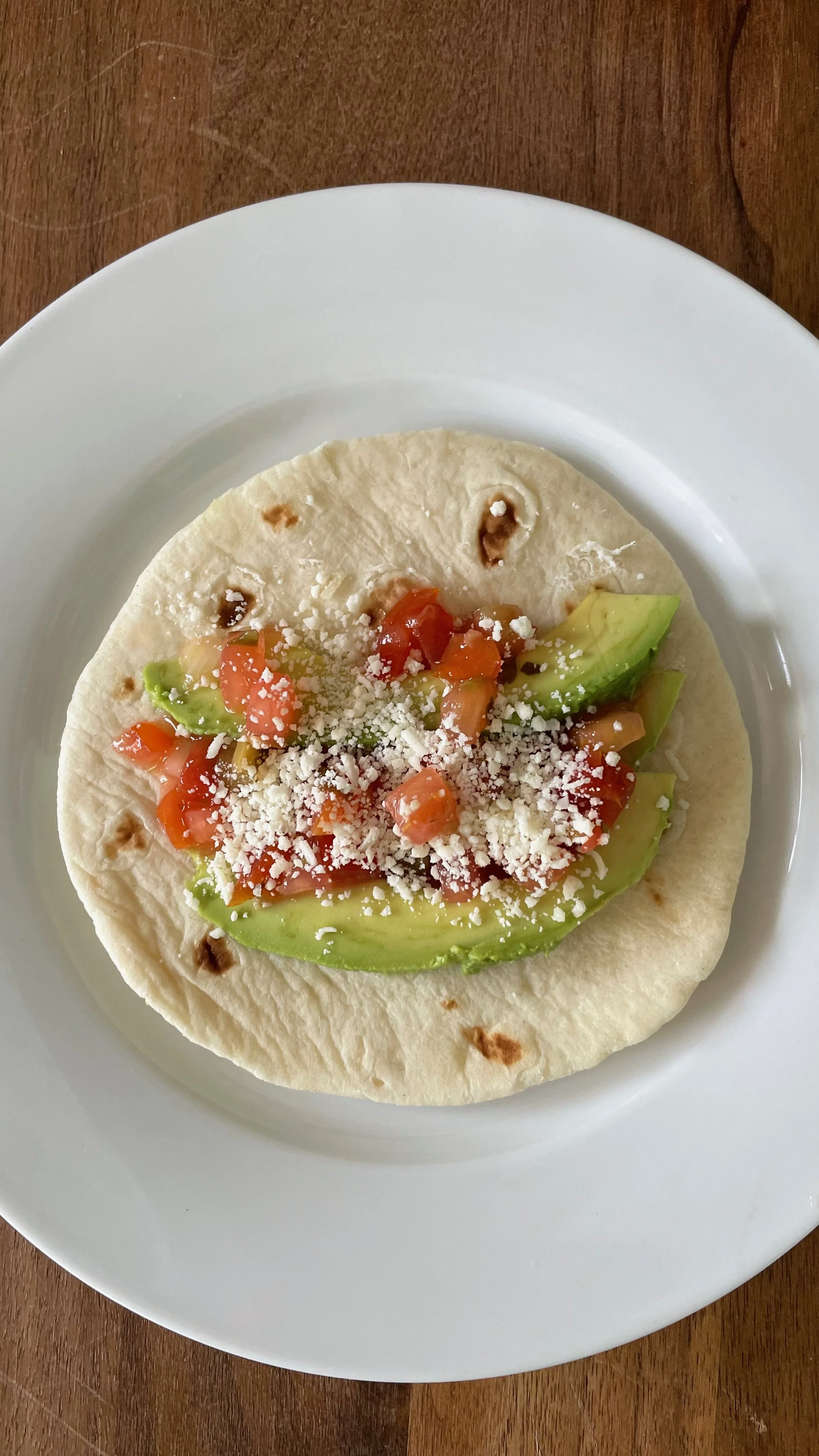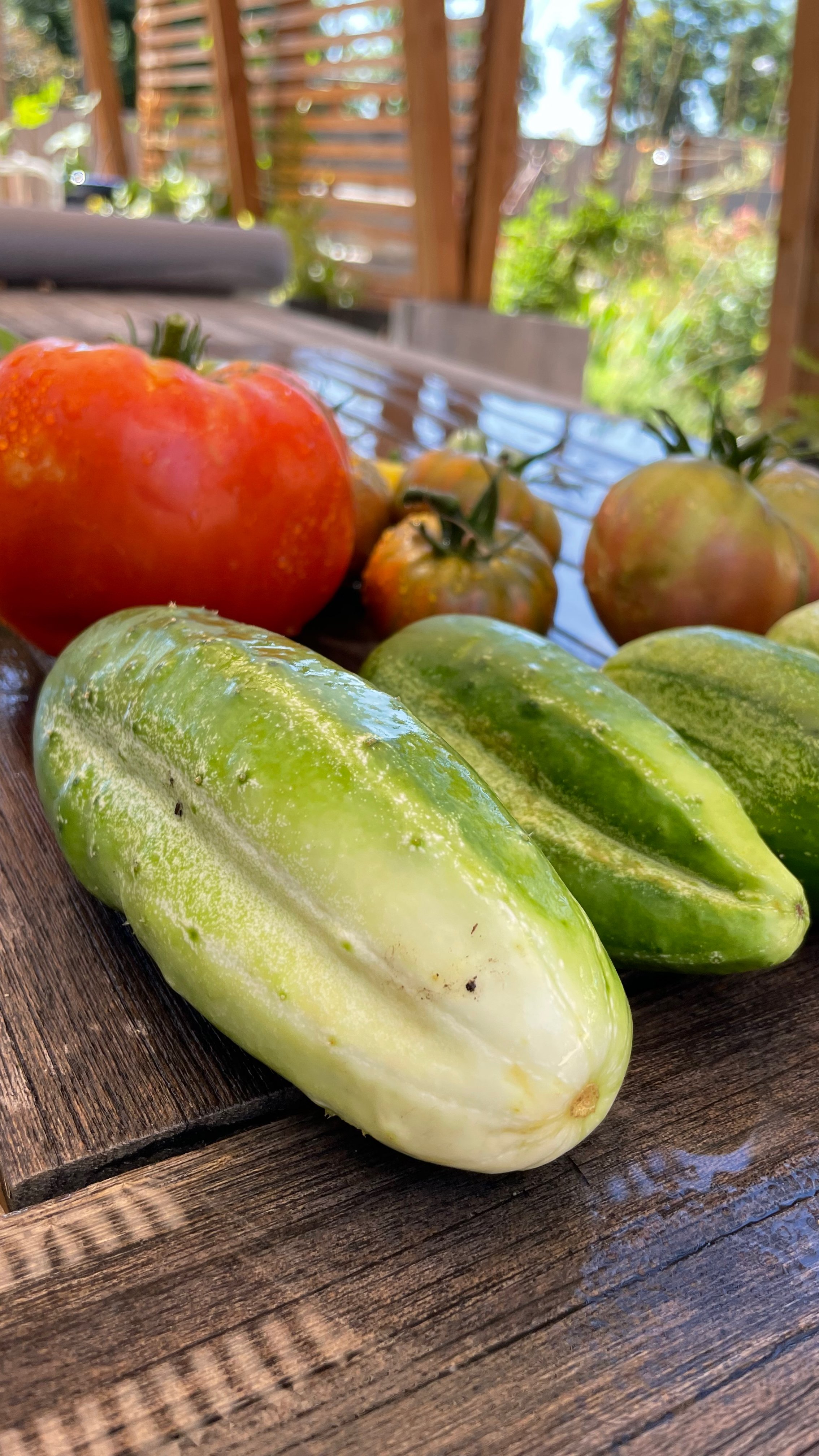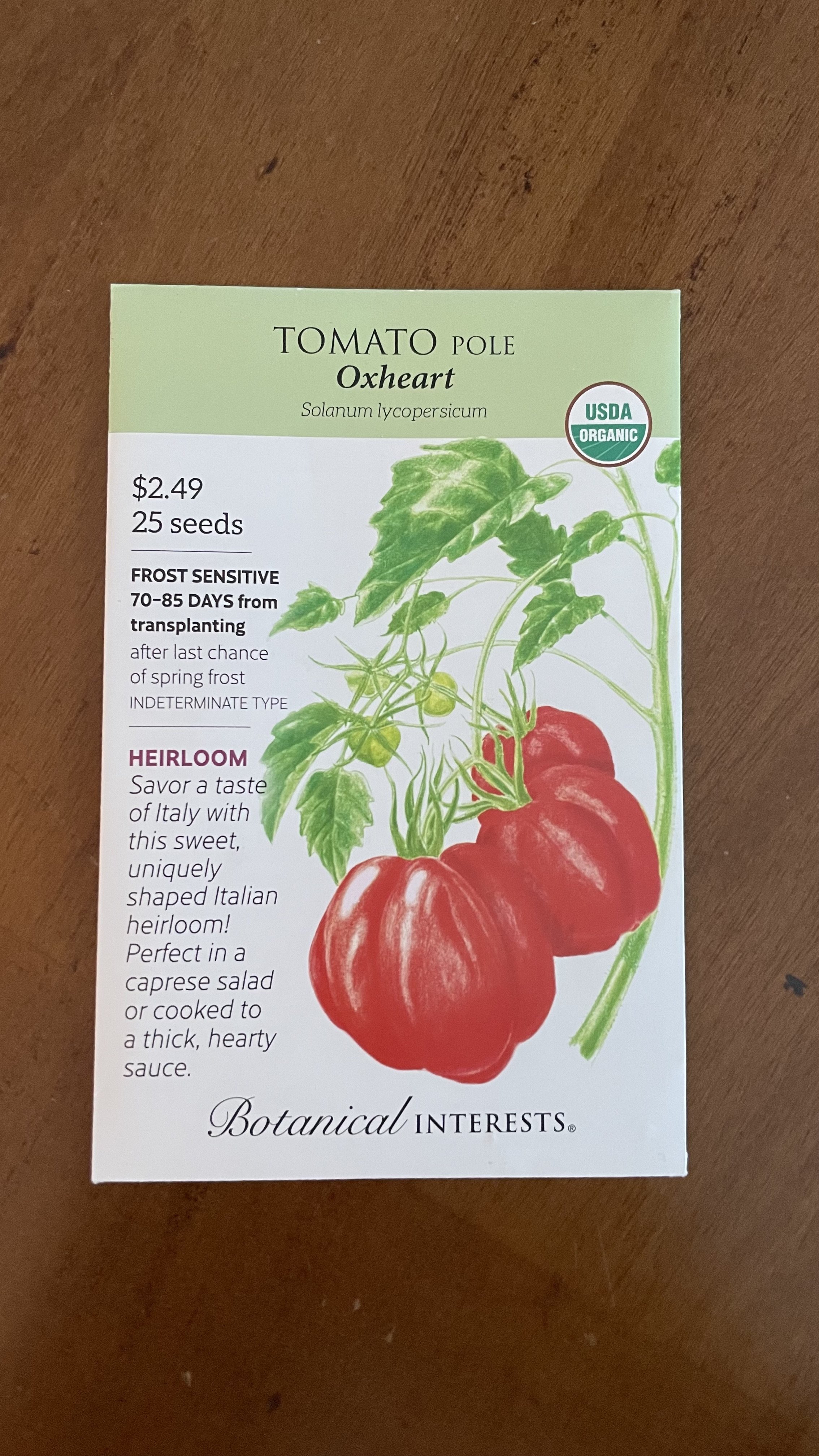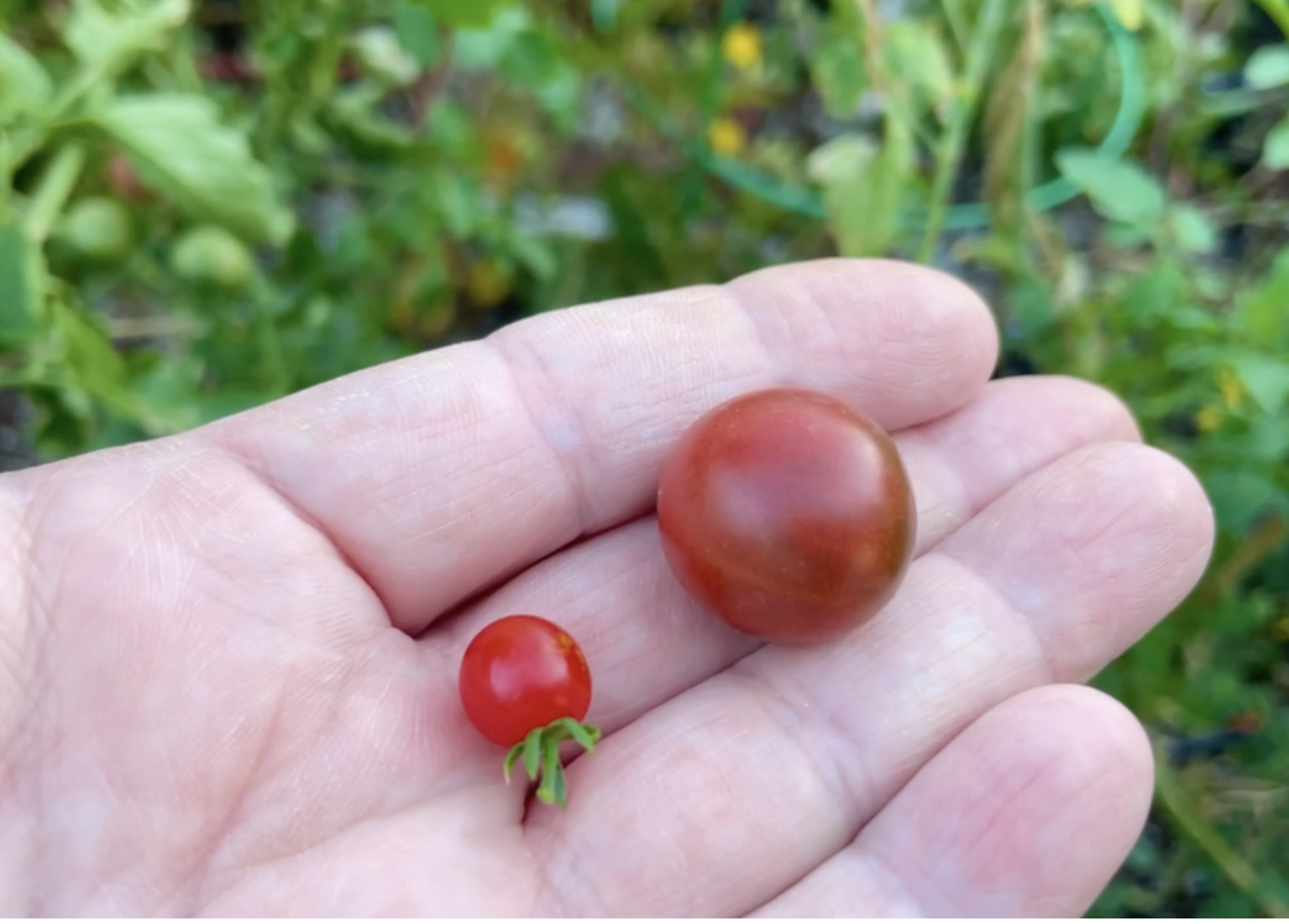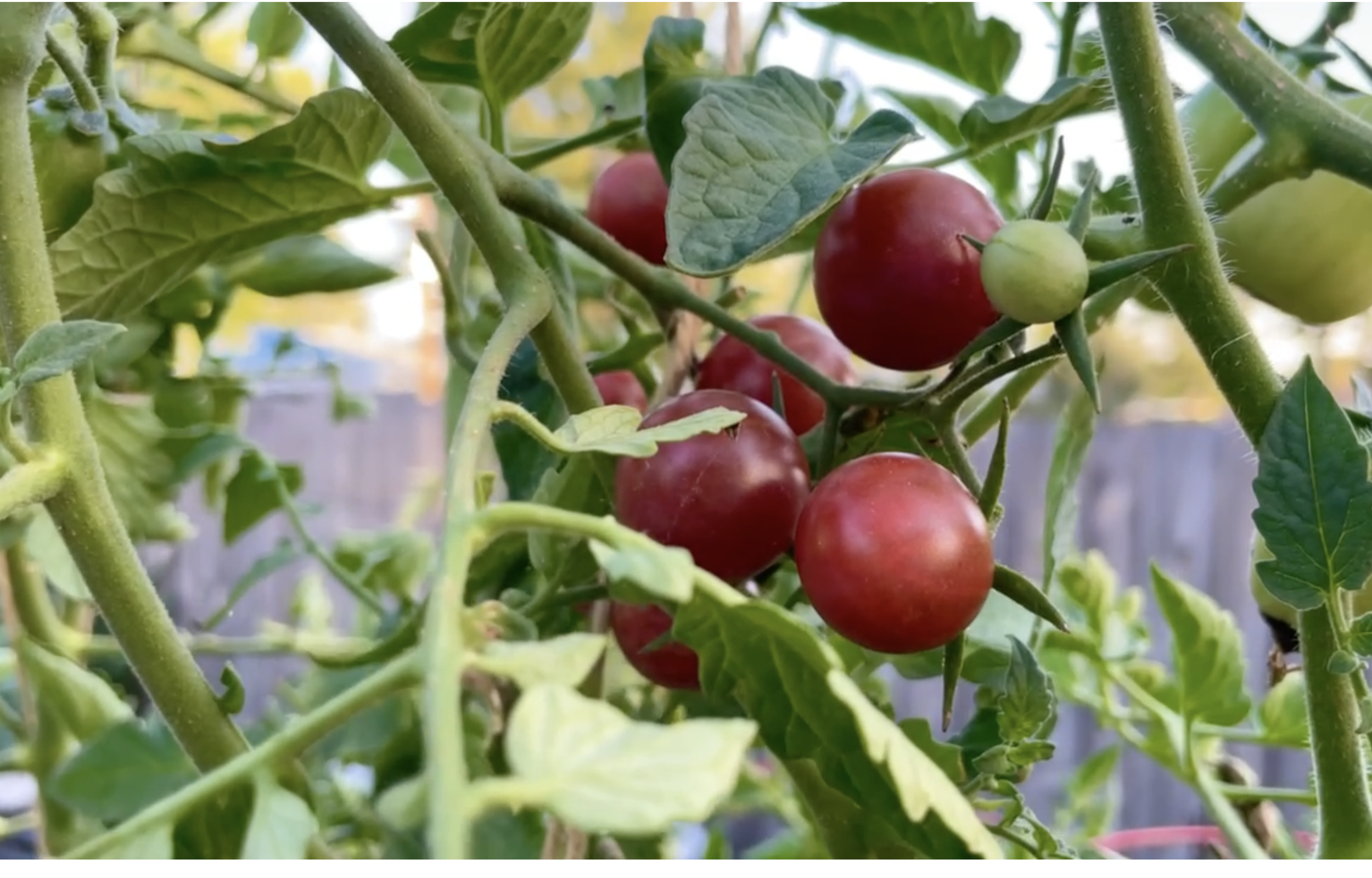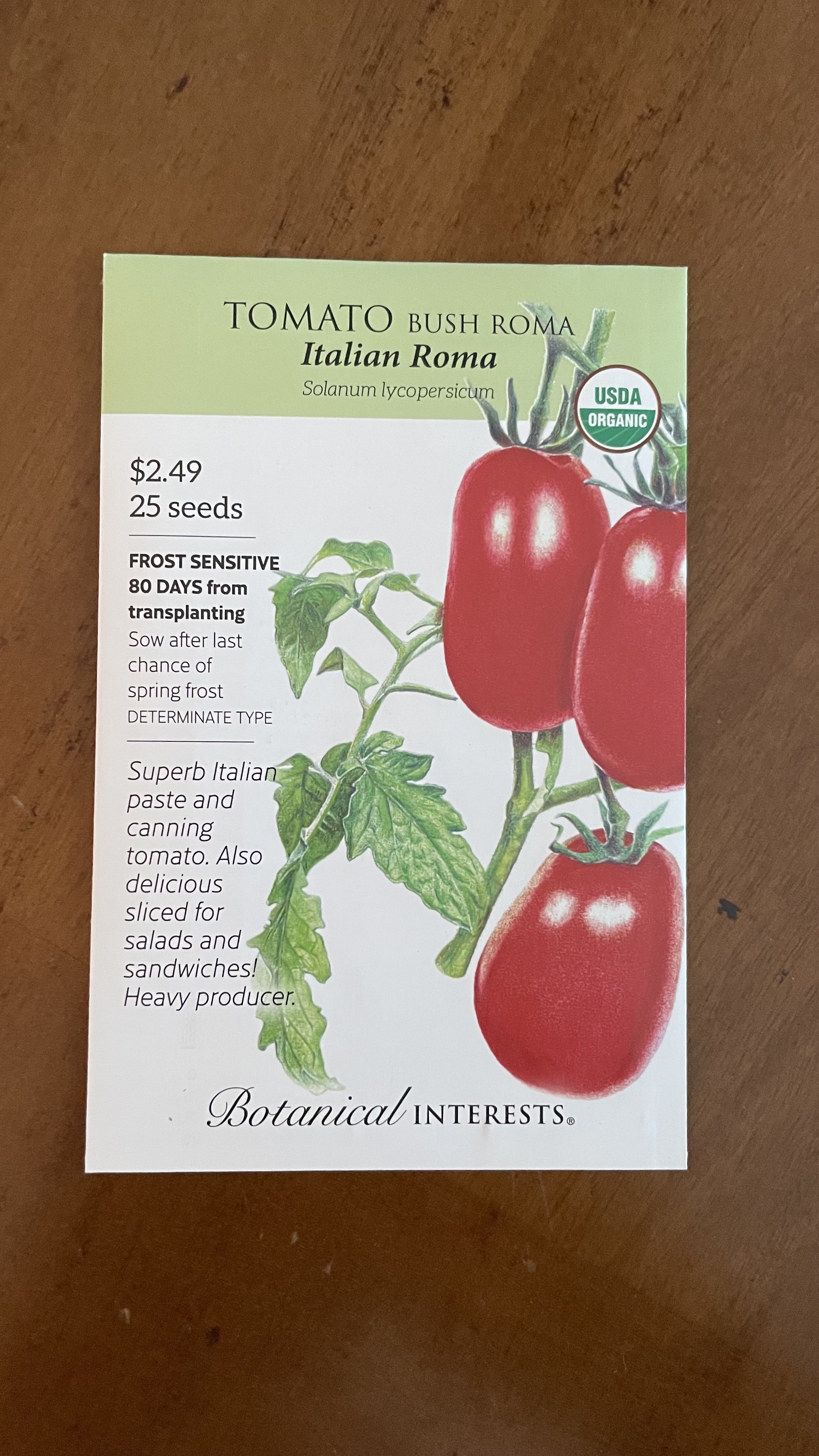Growing Tomatoes like an Italian
I didn’t like tomatoes. But then I went to Italy and everything changed. Tomatoes aren’t native to Italy, but they have become something transcendent in Italian culture, and I will never be the same. I can’t grow them like an Italian — but I can try!
In some ways I am the wrong person to write about tomatoes. I don't love them. Not the way some people do. It's a texture thing. I love tomato sauce and tomatoes in other dishes, but I'll never be the person who just eats a tomato like an apple or a pear.
In fact, I pretty much hated tomatoes until my first trip to Rome nearly 25 years ago. There to meet my father-in-law, I sat at a table outside in the Roman sunshine and bit into a piece of bruschetta – toasted bread topped with minced tomatoes, basil, and olive oil – largely to not be rude. But that first bite was an awakening. What I had known as tomatoes – the grocery store varieties of the 80s and 90s – were mealy and tasteless and slimy. This bruschetta was a different experience altogether. The tomatoes had more flavor than texture. And the balance of salt and olive oil and basil – it was sublime.
My father-in-law and I had many conversations about growing tomatoes over the years. He claimed it was Italy's volcanic soil that made their tomatoes different, and he is probably right, at least in part. The tomatoes I've eaten in Italy bear little resemblance to what we grow in North America. They are smaller, more dense, and perfectly suited to Italian cooking. Or perhaps, it's the cooking that suits the tomatoes. But they have evolved hand-in-hand over the last few centuries.
Tomatoes are native to the Andes Mountains in South America. Indigenous peoples cultivated 'tomatl', and over time their cultivation and use spread north to Mexico which is probably where European explorers/colonizers first encountered them. When the tomato arrived in Italy sometime in the mid-1500s, the Italian Renaissance had peaked, and the country was awash in money and art and political intrigue.
The first record of the tomato in Italy comes from 1544 in a text by Pietro Andrea Mattoli who called the fruit "pomo d'oro" (golden apple). The name eventually became the modern Italian word, "pomodoro". The tomatoes Mattoli describes were small, yellow fruits and were probably tomatillos in actuality, tomatillos having also arrived around the same time. Where tomatillos didn't find a place in Italian cooking, though, the red, ribbed tomato which Mattoli describes in a later piece of writing, did.
Italians didn't eat the tomato right away, however. It was classified incorrectly as poisonous, so it was cultivated and used medicinally. Cosimo I de' Medici grew it in his gardens in Florence and Pisa, and indeed, his wife, Eleanor of Toledo may have brought them with her from Spain when she married him in 1539.
The descriptions of early tomatoes in Italy are of ribbed tomatoes, probably closely related to the Zapotec tomato cultivated by the indigenous peoples of Oaxaca, Mexico. And in this video and this video from the Le Galerie degli Uffizi, Gianni Simonti, one of the historical botanists at the Boboli Gardens in Florence, discusses choosing historical tomato varieties for their reestablished vegetable gardens. One of the plants they chose was the Zapotec tomato because they suspect it is the closest to what Cosimo I de'Medici may have grown.
But as with many European food cultures, it was probably the poor and those on the outskirts of society, possibly in Italian monastic communities, who eventually adopted tomatoes into their cuisine first. Tomato varieties spread and gardeners cultivated hybrids which varied widely across the Italian principalities – and preferences for one variety over another became as deeply entrenched as Italian dialects, wines, and politics. It would take over 300 years for a recipe for spaghetti with tomato sauce (in 1844) – what we now consider a classic – to be published, but the tomato by then had become a staple up and down the Italian peninsula.
In those 300 years, tomatoes spread across the globe, too, becoming a keystone ingredient in a wide range of cuisines. Many tomato varieties are easy to grow, they hybridize easily, and the seeds are easy to save. Plus tomatoes are nutritious and can be preserved in a variety of ways. So their spread around the globe was relatively quick.
One of the biggest problems with cooking with tomatoes is that the varieties that are foundational to Italian cuisine are very different from those in Mexican dishes which are different again from Chinese or Indian or any of the delicious African cuisines. For as the tomato spread globally the number of varieties multiplied. There are more than 10,000 varieties now known – a number which grows each year as ancestral varieties are catalogued and new varieties are bred. And they aren't always interchangeable. Using the "wrong" tomato in a dish can change everything: texture, color, moisture content, and certainly taste.
For a great primer on tomato breeding and rare tomatoes for the home grower, I highly recommend Heide Dolan's Twine and Trellis account on Instagram. She has taught me so much about tomatoes and is very generous with her readers.
So, like so many other things, tomatoes are culturally and botanically complicated!
Having said all of that, in some ways I am the perfect person to write about tomatoes (Solanum lycopersicum). I am fussy about tomatoes – and I'm not willing to baby them or to put up with growing bad tomatoes or tomatoes that are hard to grow. I grow them for my family who all love tomatoes. I grow them as a labor of love. And I grow them because what I grow in my garden tastes a little bit like Italy.
I will confess: if you are looking for variety suggestions for Asian or African cuisines, I am clueless. Sorry! This is the beginning of a conversation which I hope will carry on in the comments where you can tell us where you are gardening and what kinds of tomatoes do well for you!
Before we get started, some basic tomato terminology:
Indeterminate: basically, indeterminate tomatoes get REALLY tall. They just keep growing all through the season. These are the plants that need to grow up a trellis or a tall support. A tomato cage will NOT cut it. Often called "pole" tomatoes.
Determinate: these tomato plants may get really wide, but they do stop growing at a certain height. Better for containers and even hanging baskets. But unless the seeds say they are, they will probably outgrow a smaller tomato cage without pruning. Often called "bush" tomatoes though that can be deceiving as there are tall bush varieties.
Knowing which type of tomato you are growing at the outset will help as you are planning your garden.
When choosing tomato varieties, there are a few things to consider:
Space: where are you growing and how much room do you have? So called "patio varieties" can be a great option if you are short on space!
Sunlight: almost all tomato plants need at least 6 hours of full sunlight each day – and many want more
Length of Season: this is a little trickier, but tomatoes like warmth. If you only have 2-3 months of warm days/nights, you will have a harder time growing most tomatoes. You'll want to look for quick maturing varieties – and probably start them inside to get a head start.
I always grow two or three of each plant. That way I know if they both struggle, then it isn't just a bad plant, but it's a problematic variety for me. So generally, I grow 10-12 plants – 2-3 of each of 5 varieties.
Here are my best suggestions for tomatoes my family loves – and which taste a bit like Italy to me!
Oxheart Pole Tomatoes: Indeterminate
No one in my family likes tomatoes that have lots of seeds and goo. We like tomatoes that are fleshy, and the Oxheart is a beautiful, fleshy tomato. From the Liguria region where it is known as 'Cuore Di Bue', the Oxheart tomato is a ribbed tomato – which is more common in many of the northern Italian provinces.
I grew these two years ago then replaced them with Beefsteak Pole Tomatoes. I'll be going back to Oxheart this year. The Beefsteak are good, but there is more goo than I like, and they produced too many tomatoes for our family. I know. But I am not a big canner, so I was giving them away. Insanity! If you love big tomatoes, though, Beefsteak is a good option!
Chocolate Cherry Pole Tomatoes: Indeterminate
Last year was the first year I'd grown this variety, and OMG. They were the first tomatoes to appear, and the last to quit. A fabulous producer! And they are a delicious cherry tomato. We didn't cook with them, so I can't attest to their use other than in salads. But they were a wonderful basic cherry tomato, and I'll be growing them again this year. Also good on pizzas!
Currant Tomatoes (Solanum pimpinellifolium): Indeterminate
So this one is a wild tomato – and a different species than other tomatoes. But it is a really cool plant! My child came home from his school garden raving about it one day, so we grew it the next year. It's great! They are tiny little tomatoes – the size of peas. Delicious in salads, and amazing for kids (and grown ups) to just eat off the vines.
You may see them called "Everglades Tomatoes," too. Some consider them a Florida native plant, and they are largely disease-resistant and need less water than many tomato varieties.
I grew these last year, and they threatened to take over the entire tomato bed. They are low-growing, but they can climb and spread – a LOT. Some gardeners suggest growing them in hanging baskets or as a ground cover. I can see both being effective. I won't be growing them with my other tomatoes this year. They will get a place of their own. But I will definitely be growing them again.
This is an unusual variety. You will need to grow them from seed – but they are easy. Not commonly available as starts. One of the most common varieties is Sweet Pea Currant Tomato.
Italian Roma Bush Tomatoes: Determinate
This is another variety that is a pretty stereotypical Italian-style tomato. But I am here to warn you: they are very thirsty. Romas aren't actually an Italian tomato. They are an American cross between the San Marzanos and Red Top, and they were developed for commercial growers so that they would have a long shelf life. They preserve really well, and they make good sauces.
However, they are the fussiest of the tomatoes on this list. They need a lot of water all the time. Two years ago, when we had a historically wet summer, we had amazing Roma tomatoes. Last year it was historically dry: a terrible crop. And that's with irrigation. But it was so hot, and our air in Colorado is so dry – they just didn't stand a chance. So if you are in a more humid environment with more rain: go for it! In the Mountain West? Well, make sure they aren't the only tomatoes you grow!
San Marzano Roma Pole Tomato: Indeterminate
This is as close as I get to that bruschetta in Rome. These are a variety used in Italian cuisine around the world, but just because you have the seeds, doesn't mean it will taste the same. The soil is a huge part of growing a San Marzano tomato that tastes like Italy. And if you haven't watched Stanley Tucci's excellent show, Searching for Italy, well… don't watch it while you are hungry, but the Naples episode shows you why a San Marzano tomato is more than just a seed.
Having said that, the key to growing a decent but not transcendent San Marzano tomato is consistent watering. If you don't have consistent watering – and I mean an irrigation system – forget it. They are prone to blossom end rot, and the only way to prevent blossom end rot is consistent watering.
NOTE: No, egg shells and calcium supplements won't help – no matter what so-and-so on TikTok says! Blossom end rot is caused by insufficient calcium BUT low calcium in the soil isn't the issue. It's an inconsistent supply of calcium caused by inconsistent watering or soggy soils. More on Blossom End Rot here.
Remember how different tomato varieties flourished in different Italian provinces? San Marzano tomatoes come from Naples – near the Mediterranean Sea. They are a Goldilocks variety – not too hot, not too cold, not too wet, not too dry. Rich, volcanic soil. They like it just right. And that can be a challenge if you don't live in Naples. Seriously, watch that Stanley Tucci episode. You'll understand!
Do I still grow them? Yes. And I've found ollas to be the key to getting good tomatoes. I grow 2-3 plants, and I know they won't be perfect. But I do get a few great bruschetta lunches every summer from them.
Some new varieties I'm trying this year:
I have ordered seeds for two new-to-me varieties this year. Vernazza is an Italian tomato from Liguria that looks meaty and full. And I'm going to try Piennolo Rosso, a bunching tomato that can be stored for months. I bought seeds for both from Uprising Seeds, and I can't wait to see how they do!
Other Recommendations:
Over the years, I have grown lots of different varieties in several different places. Here are a few that were particularly easy:
Ok. In the comments let us know WHERE you are and what varieties of tomatoes thrive in your garden!
Happy Gardening!
Angela
References:
Mariani, Andrea. "History of the Tomato in Italy and China: Tracing the Role of Tomatoes in Italian and Chinese Cooking," Emory University Scholar Blogs, 3 July 2018, https://scholarblogs.emory.edu/noodles/2018/07/03/history-of-the-tomato-in-italy-and-china-tracing-the-role-of-tomatoes-in-italian-and-chinese-cooking
Rizzo, Alessandra. "The History of Italy’s Tomato: From New World to Kitchen Staple," CNN, 13 Feb. 2023, https://www.cnn.com/travel/article/tomato-italy-history/index.html.
"The Grand Duke's Tomato," Uffizi Galleries, https://www.uffizi.it/en/video/the-grand-duke-s-tomato.
"The History of Tomatoes," University of Vermont Extension, 25 Aug. 2021, https://www.uvm.edu/extension/news/history-tomatoes.
"The Italian Tomato," Colorado State University Extension, https://pueblo.extension.colostate.edu/the-italian-tomato/.



